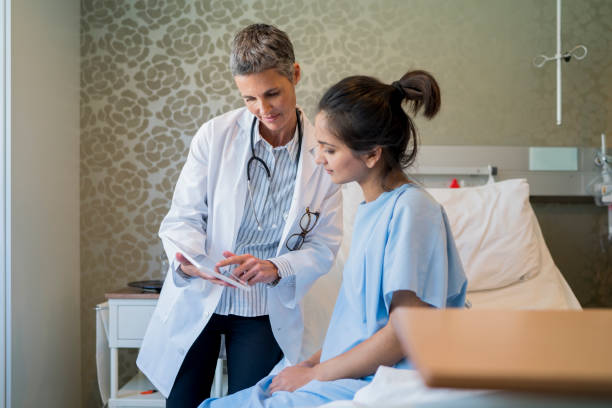Endometriosis can be a very painful condition. The pain is often worse than what you might experience during your period. It also has the potential to interfere with your daily life, physically and emotionally. If left untreated, it could lead to infertility or other major health issues. Luckily, there are many treatments available that can help reduce or eliminate endometriosis symptoms for good. We’ll talk about different methods of treatment in this article so that you’re better equipped to make an informed decision about your future health.
What is endometriosis?
Endometriosis is a condition where parts of the lining of your uterus (endometrium) grow outside the uterus, most commonly on the ovaries and fallopian tubes. It is possible for the endometrium to grow anywhere in the abdomen or pelvis. You can prevent endometriosis from happening by taking birth control pills, which may stop menstrual periods completely and help your body “rest” during this healing time.
Signs and symptoms of endometriosis
There are different signs and symptoms of endometriosis depending on what area the endometrial tissue has grown. Some signs include persistent pelvic pain, painful sex, difficult or painful bowel movements or urinating, nausea, vomiting or diarrhoea before menstruation.
Symptoms might also include infertility, painful menstrual periods (dysmenorrhea), pain in joints in the pelvic region and shooting pains coming from the abdomen to different areas in the body. If you are experiencing fertility issues, you should consider taking Clomid medication. Make sure to visit your nearest fertility clinic. Many times these shooting pains go into the back that may be mistaken for kidney stones or appendicitis.
Treatment for endometriosis
The best way to treat endometriosis is by taking birth control pills. Birth control pills can stop menstrual periods completely and help your body “rest” during the healing time. If you take birth control pills at a certain time of the month, then your period will come on that day.
Surgery is another way to treat endometriosis. Many women with endometriosis may need surgery for this reason. Some symptoms include very painful periods (dysmenorrhea), pelvic pain before and during menstruation, infertility or bowel symptoms like pain in the belly region or having diarrhoea before menstruation. Even so, surgery is not always helpful because some women can be delicate with different types of surgeries. There might also still be symptoms afterwards which means surgery did not fully remove the endometrial tissue outside the uterus.
Tips for living with endometriosis
It is possible to live a more carefree life by avoiding the different triggers of a painful episode. Some things to avoid are tight clothes, sitting on hard surfaces and certain foods that may cause constipation. Be aware of the different symptoms that can indicate you have an episode coming up. When these symptoms happen, it is important to take some time off from your usual routine and errands.
Only do those few things that are needed for everyday living which will not trigger the cycle again. Painful cycles can be reduced by taking over-the-counter pain relievers like naprox.
Endometriosis can be a painful condition that is difficult to manage. Fortunately, there are many treatments available for this disease and it is possible to live a more carefree life by avoiding the different triggers of an episode or limiting yourself in certain ways when you have symptoms. Let us know if we can help with your search for relief from endometriosis so that you can feel like yourself again!

Leave a Reply